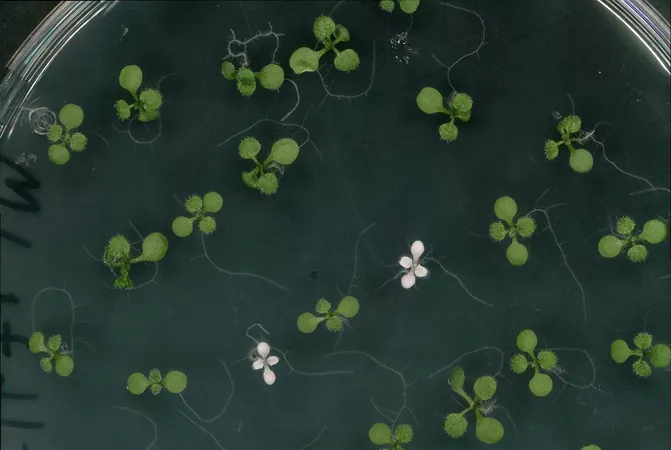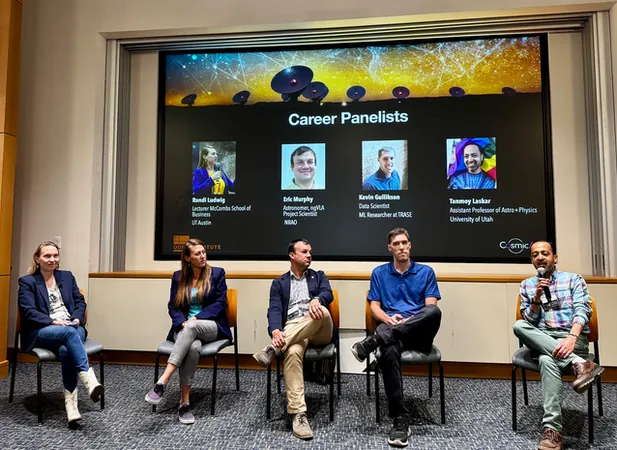
Revolutionary Crop Editing Method Could Change Agriculture Forever
2025-04-24
Author: Noah
In a groundbreaking development that could transform global agriculture, researchers have unveiled a new method for crop editing that promises to enhance food security by boosting crop yields, improving nutritional value, and increasing resilience to climate change.
Traditional methods of plant transformation have long been plagued by inefficiencies and high costs, often excluding many vital plant species from benefiting from advanced genetic tools. However, a team of scientists from UCLA, led by renowned professors Steven Jacobsen and Jennifer Doudna, has pioneered a novel, transgene-free genome editing technique utilizing a compact CRISPR system delivered via a common virus.
This innovative approach targets specific DNA sequences and facilitates inheritable genetic modifications without introducing foreign DNA. In their research, the team engineered the tobacco rattle virus to deliver the CRISPR-like enzyme, ISYmu1, into Arabidopsis thaliana—a model organism in plant studies. By doing so, they created a streamlined process for crop improvement, simplifying the editing workflow into a single step.
A Game-Changer in Crop Breeding
As Jacobsen explained, one of the most significant obstacles in plant breeding has been effectively introducing gene-editing tools into the right cells. Their breakthrough allows them to bypass this bottleneck entirely. This method ensures that the edits can be passed on through generations, marking a paradigm shift in how plant genetics could be approached.
The small size of ISYmu1 allowed it to be packaged within the virus, enabling it to travel throughout the plant, including reaching reproductive cells—something that traditional CRISPR systems could not achieve.
From Lab to Field: Testing Successes
The team tested various compact CRISPR systems and identified ISYmu1 as the standout performer. By using a natural soil bacterium to introduce the engineered virus into plants, they observed telltale signs of successful edits—distinguished by white patches on the leaves where genetic alterations occurred.
Since the virus does not infiltrate the seeds, only the intended genetic alterations are inherited, creating plants that are modified yet free from viral or foreign genes.
Broad Reach and Future Prospects
The tobacco rattle virus has the capability to infect over 400 plant species, expanding the potential applications of this revolutionary technology. Jacobsen emphasized that this method could be particularly advantageous for crops that current techniques struggle to modify.
"Having grown up on an almond ranch, I understand the challenges faced in agriculture, especially in developing regions. This technology holds real promise for accessing under-resourced crops," he stated.
Collaborative Excellence in Research
This noteworthy study showcases the strength of collaboration, combining Doudna’s CRISPR expertise, Banfield’s identification of novel CRISPR systems, and Jacobsen’s focus on plant applications to forge a powerful new tool for crop breeding.
Looking Ahead: Expanding the Technology
Currently, researchers are poised to test this system in additional plant species, including several major crops. Plans are also in the works to enhance the tool to facilitate multiple edits simultaneously and to boost its overall efficiency, setting the stage for a potential revolution in agricultural biotechnology.
This research was generously supported by various organizations, highlighting the collaborative spirit driving advancements in agricultural science.









 Brasil (PT)
Brasil (PT)
 Canada (EN)
Canada (EN)
 Chile (ES)
Chile (ES)
 Česko (CS)
Česko (CS)
 대한민국 (KO)
대한민국 (KO)
 España (ES)
España (ES)
 France (FR)
France (FR)
 Hong Kong (EN)
Hong Kong (EN)
 Italia (IT)
Italia (IT)
 日本 (JA)
日本 (JA)
 Magyarország (HU)
Magyarország (HU)
 Norge (NO)
Norge (NO)
 Polska (PL)
Polska (PL)
 Schweiz (DE)
Schweiz (DE)
 Singapore (EN)
Singapore (EN)
 Sverige (SV)
Sverige (SV)
 Suomi (FI)
Suomi (FI)
 Türkiye (TR)
Türkiye (TR)
 الإمارات العربية المتحدة (AR)
الإمارات العربية المتحدة (AR)